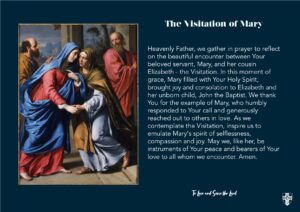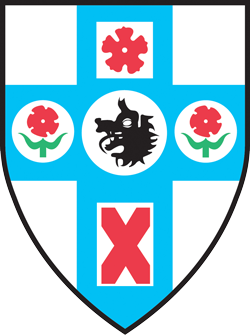Today, we joyfully celebrate the Feast of the Visitation of the Blessed Virgin Mary, commemorating the visit of Mary to her cousin Elizabeth. This beautiful event, recorded in the Gospel of Luke, is rich in meaning and offers profound lessons for our faith and daily lives.
The story of the Visitation is found in Luke 1:39-56. After the Annunciation, when the Angel Gabriel announced that she would conceive by the Holy Spirit and bear the Son of God, Mary set out “with haste” to visit her cousin Elizabeth, who was also miraculously pregnant with John the Baptist. Upon Mary’s arrival, Elizabeth, filled with the Holy Spirit, exclaimed, “Blessed are you among women, and blessed is the fruit of your womb! And why is this granted to me that the mother of my Lord should come to me?” (Luke 1:42-43).
In response, Mary proclaimed her Magnificat, a song of praise and thanksgiving to God: “My soul magnifies the Lord, and my spirit rejoices in God my Saviour” (Luke 1:46-47).
Lessons from the Visitation:
- Faith and Obedience: Mary’s journey to visit Elizabeth highlights her obedience to God’s will. Despite the uncertainties and potential difficulties of her own situation, she responds with faith and action. Her willingness to serve others even in her time of need exemplifies the selflessness and trust in God that we are called to emulate.
- Joy and Recognition: Elizabeth’s greeting and the leaping of John the Baptist in her womb signify the recognition of the presence of the Lord. This moment is filled with joy and prophetic insight. It reminds us to be attuned to the presence of God in our lives and to respond with joy and gratitude.
- Humility and Praise: The Magnificat is a profound expression of humility and praise. Mary acknowledges her lowliness and extols the greatness of God, who “has done great things” for her. This canticle incites us to reflect on our own lives, recognising God’s blessings and expressing our gratitude and praise.
The Visitation is not only a historical event but also a significant part of Catholic devotion. It is one of the Joyful Mysteries of the Rosary, inviting us to meditate on this encounter and its spiritual implications. The feast also highlights the virtues of charity, humility and joy.
Living the Spirit of the Visitation:
- Service and Charity: Mary’s visit to Elizabeth was an act of service. In our own lives, we are called to serve others, particularly those in need. Acts of kindness, support and presence can bring comfort and joy to those around us, reflecting the love of Christ.
- Community and Support: The interaction between Mary and Elizabeth emphasises the importance of community and mutual support. We are encouraged to build strong, supportive relationships within our families, parishes and communities, where faith can be shared and nurtured.
- Prayer and Reflection: The Magnificat is a powerful prayer that can be incorporated into our daily devotions. Reflecting on its words helps us cultivate a spirit of gratitude and trust in God’s providence.
The Feast of the Visitation of Mary is a celebration of faith, joy and service. It reminds us of the importance of recognising God’s presence in our lives and responding with love and action. As we honour this special day, let us strive to follow Mary’s example of humility, charity and praise, bringing the light of Christ to those we encounter.
May the Blessed Virgin Mary, who bore the Saviour and brought joy to her cousin, Elizabeth, inspire us to live lives of deep faith and compassionate service.
Blessed Feast of the Visitation!


